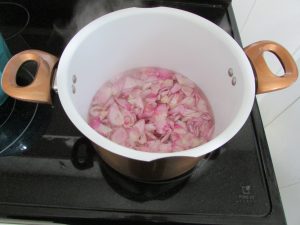
Photo by Mitchell Luo on Unsplash
Food is essential. No only for survival but also for socialization. If you have hung out on my website for any amount of time, you know that meals are a mainstay in my flashes and that I will Geek the Science out of food – everything from the science of Fried Chicken to how Nori develops in nature.
Time to talk about food in space. Last month I touched on soda being a non-starter in an environment where you can’t burp with any grace. Next question on the table, is space exploration going to be sans fries too? I mean, the movie The Martin, Matt Damon raised potatoes – are we going to have potatoes and no fries?!?
It was a worry for a bit – again the action of microgravity and gas which takes out beer and Coke – might mean the bubbling cauldron of oil won’t work but fries do look like they can stay on the menu after some tests run in parabolic flights. (Lea) Hamburgers – with yeasty bread and greasy meat and cheese, all of which are high gas items – may not make it, but at least we get to keep our fries.
Seems strange to test out cooking techniques for space-worthiness, but food is a necessity on earth and food will be a necessity in space. In addition, like the invention of Tang (Cordell), all knowledge adds to Earth’s present benefit as well as our decedents braving the Black.
Bibliography
Cordell, Lyndsay. “Tang: The Orange Drink That Got Its Start From NASA.” Wide Open Country. 18 February 2021. (https://www.wideopencountry.com/tang-drink/ – last viewed 11/14/2023)
Lea, Robert. “Space food: Why Mars astronauts won’t have to hole the fries.” space.com. 12 June 2023. (https://www.space.com/space-food-frying-works-microgravity – last viewed 11/14/2023)


 Roses grown in my yard. I’ve been working on them for two years now.
Roses grown in my yard. I’ve been working on them for two years now.



 RECIPE: LIBUM (An Offering)
RECIPE: LIBUM (An Offering)